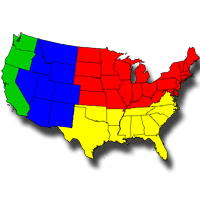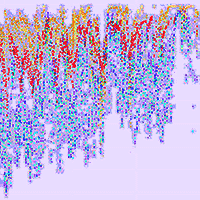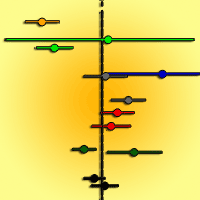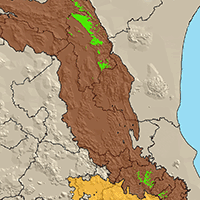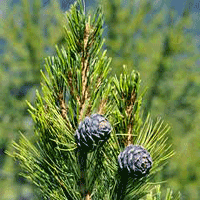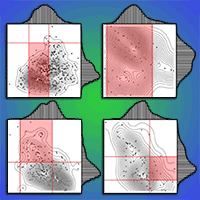
Reviewing climatic traits for the main forest tree species in Italy
Matteo Pecchi (1) , Maurizio Marchi (2), Francesca Giannetti (1), Iacopo Bernetti (1), Marco Bindi (3), Marco Moriondo (4), Fabio Maselli (4), Luca Fibbi (4), Piermaria Corona (2), Davide Travaglini (1), Gherardo Chirici (1)
iForest - Biogeosciences and Forestry, Volume 12, Issue 2, Pages 173-180 (2019)
doi: https://doi.org/10.3832/ifor2835-012
Published: Mar 15, 2019 - Copyright © 2019 SISEF
Research Articles
Abstract
The future dynamics of forest species and ecosystems depend on the effects of climate change and are related to forest management strategies. The expected impacts of climate change are linked to forest growth and productivity. An increase in the length of the growing season and greater productivity are likely as well as shifts in average climatic values and more variable frequencies, intensities, durations and timings of extreme events. The main aim of this work is to assess and describe the climatic requirements for Italian forest tree species. We used 7.272 field observations from Italian National Forest Inventory plots and average annual temperatures and precipitation as interpolated from raster maps with 1 km spatial resolution. On this basis we evaluated the current observed distributions of the 19 most important tree species in Italy with respect to potential climatic limits based on expert knowledge and the available literature. We found that only 46% of the observations fall within the potential joint temperature and precipitation limits as defined by expert knowledge. For precipitation alone, 70% of observations were within the potential limits, and for temperature alone, 80% of observations were within the potential limits. Similarity between current observed and potential limits differ from species-to-species with broadleaves in general more frequently distributed within the potential climatic limits than conifers. We found that ecological requirements and potential information should be revised for some species, particularly for the Pinus genus and more frequently for precipitation. The results of the study are particularly relevant given the threat of climate change effects for Italian forests which are broadly acknowledged to be a biodiversity hotspot. Further investigations should be aimed at modelling the effects of climate changes on Italian forests as a basis for development of mitigation and adaptation forest management strategies.
Keywords
National Forest Inventory, Sustainable Forest Management, Spatial Analysis, Forest Monitoring, Climatic Drivers
Authors’ Info
Authors’ address
Francesca Giannetti 0000-0002-4590-827X
Iacopo Bernetti 0000-0003-2297-1070
Davide Travaglini 0000-0003-0706-2653
Gherardo Chirici 0000-0002-0669-5726
geoLAB - Laboratory of Forest Geomatics, Department of Science and Technology in Agriculture, Food, Environment and Forestry, University of Florence, Firenze (Italy)
Piermaria Corona 0000-0002-8105-0792
CREA - Research Centre for Forestry and Wood, Arezzo (Italy)
Department of Science and Technology in Agriculture, Food, Environment and Forestry, University of Florence, Florence (Italy)
Fabio Maselli 0000-0001-6475-4600
Luca Fibbi 0000-0001-6985-6809
CNR-IBIMET, via Madonna del Piano 10, 50019, Sesto Fiorentino, Florence (Italy)
Corresponding author
Paper Info
Citation
Pecchi M, Marchi M, Giannetti F, Bernetti I, Bindi M, Moriondo M, Maselli F, Fibbi L, Corona P, Travaglini D, Chirici G (2019). Reviewing climatic traits for the main forest tree species in Italy. iForest 12: 173-180. - doi: 10.3832/ifor2835-012
Academic Editor
Marco Borghetti
Paper history
Received: May 04, 2018
Accepted: Feb 01, 2019
First online: Mar 15, 2019
Publication Date: Apr 30, 2019
Publication Time: 1.40 months
Copyright Information
© SISEF - The Italian Society of Silviculture and Forest Ecology 2019
Open Access
This article is distributed under the terms of the Creative Commons Attribution-Non Commercial 4.0 International (https://creativecommons.org/licenses/by-nc/4.0/), which permits unrestricted use, distribution, and reproduction in any medium, provided you give appropriate credit to the original author(s) and the source, provide a link to the Creative Commons license, and indicate if changes were made.
Web Metrics
Breakdown by View Type
Article Usage
Total Article Views: 47625
(from publication date up to now)
Breakdown by View Type
HTML Page Views: 38251
Abstract Page Views: 4980
PDF Downloads: 3546
Citation/Reference Downloads: 4
XML Downloads: 844
Web Metrics
Days since publication: 2488
Overall contacts: 47625
Avg. contacts per week: 133.99
Citation Metrics
Article Citations
Article citations are based on data periodically collected from the Clarivate Web of Science web site
(last update: Mar 2025)
Total number of cites (since 2019): 17
Average cites per year: 2.43
Publication Metrics
by Dimensions ©
Articles citing this article
List of the papers citing this article based on CrossRef Cited-by.
References
A global overview of drought and heat-induced tree mortality reveals emerging climate change risks for forests. Forest Ecology and Management 259: 660-684.
CrossRef | Gscholar
Selvicoltura speciale [Special silviculture]. UTET, Torino, Italy, pp. 415. [in Italian]
Gscholar
Assessing forest windthrow damage using single-date, post-event airborne laser scanning data. Forestry 1-11.
CrossRef | Gscholar
Classificazioni ed indici del clima in rapporto alla vegetazione forestale italiana [Classifications and indices of the climate in relation to the Italian forest vegetation]. Nuovo Giornale Botanico Italiano 44: 1-169. [in Italian]
Gscholar
I boschi delle regioni alpine italiane: tipologia, funzionamento, selvicoltura [The woods of Italian Alpine regions: typology, functioning, silviculture]. CLEUP, Padua, Italy, pp. 600. [in Italian]
Gscholar
I boschi delle regioni meridionali e insulari d’Italia: tipologia, funzionamento, selvicoltura [The woods of southern and insular regions of Italy: typology, functioning, silviculture]. CLEUP, Padua, Italy, pp. 472.
Gscholar
I boschi delle regioni dell’Italia centrale: tipologia, funzionamento, selvicoltura [The wood of central regions of Italy: typology, functioning, silviculture]. CLEUP, Padua, Italy, pp. 426. [in Italian]
Gscholar
climate change 2001: the scientific basis. Contribution of Working Group I to the Third Assessment Report of the Interngovernmental Panel on Climate Change (Houghton, JT, Ding Y, Griggs DJ, Noguer M, van der Linden PJ, Dai X, Maskell K, Johnson CA eds). Cambridge University Press, Cambridge, United Kingdom and New York, NY, USA, pp. 881.
Gscholar
Climate change 2014: impacts, adaptation, and vulnerability. Part A: global and sectoral aspects. Contribution of Working Group II to the Fifth Assessment Report of the Intergovernmental Panel on Climate Change (Field CB, Barros VR, Dokken DJ, Mach KI, Manstrandrea MD, Bilir TE, Chatterjee M, Ebi KL, Estrada YO, Genova RC, Girma B, Kissel ES, Levy AN, MacCracken S, Mastrandrea PR, White LL eds). Cambridge University Press, Cambridge, United Kingdom and New York, NY, USA, pp. 1132.
Gscholar
Hot-spots for conservation of plant diversity in the Mediterranean Basin. Annals of the Missouri Botanical Garden 84: 122-127.
Gscholar
Studio preliminare sulla coltura di specie forestali esotiche in Italia. Prima parte generale [Preliminary study on the cultivation of exotic forest species in Italy. First general part]. Annali del Regio Istituto Superiore Nazionale Forestale vol. I - 191, pp. 221. [in Italian]
Gscholar



